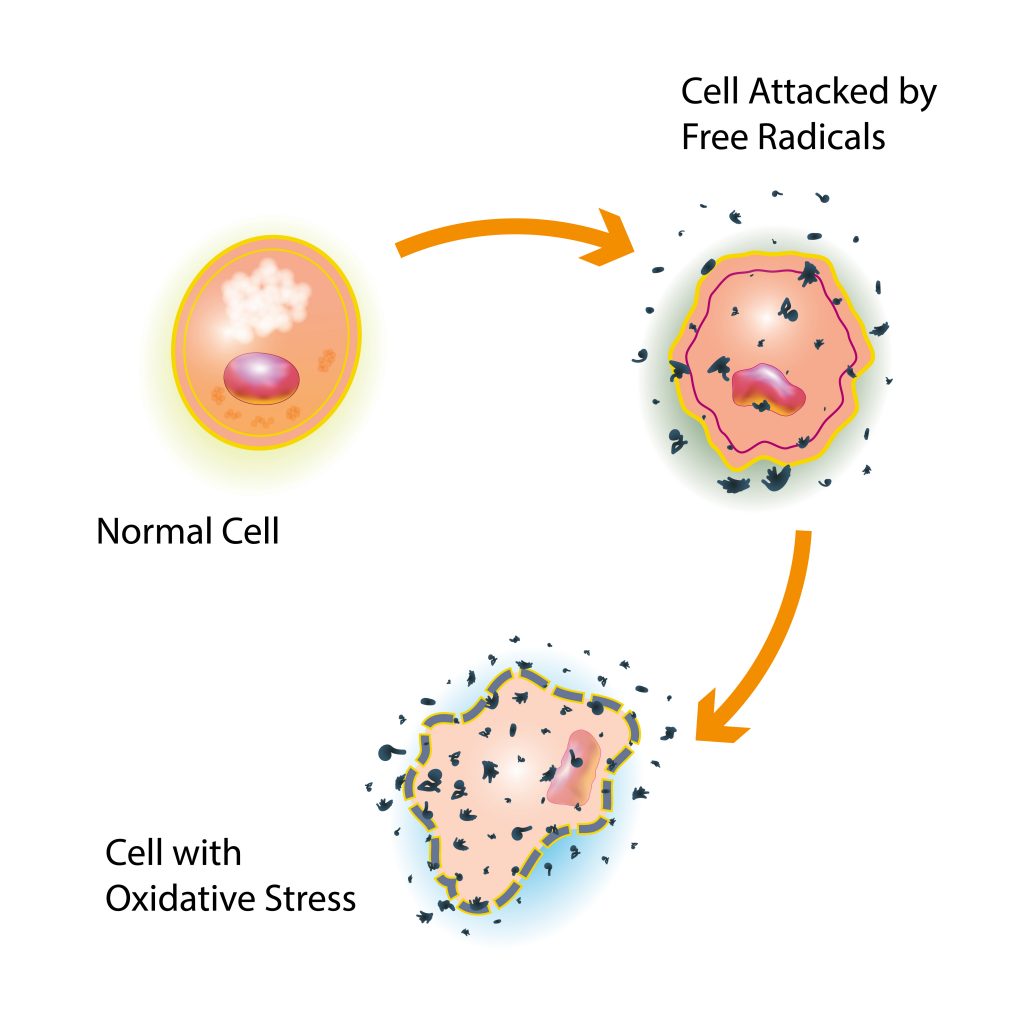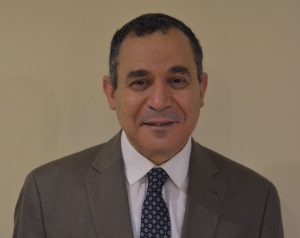Dr W. Kent Anger | Dr Fayssal M. Farahat | Dr Pamela J. Lein | Dr Diane S. Rohlman – Establishing the Neurotoxic Impact of Chlorpyrifos Exposure in Workers
Chlorpyrifos (CPF) is one of the most commonly used pesticides in the world. Agricultural workers in Egypt have relatively high levels of exposure to it when working in the cotton fields but until now, the neurotoxic impact of this has been uncertain due to a lack of evidence linking CPF dose and neurotoxicity. Dr W. Kent Anger, Dr Fayssal M. Farahat, Dr Pamela J. Lein and Dr Diane S. Rohlman have brought together their respective research expertise to collaborate on this issue. Their findings have the potential to greatly improve the long-term health of employees working with pesticides.
Chlorpyrifos: An Effective Pesticide
Organophosphorus pesticides (OPs) are the most common class of insecticides used in agriculture globally, and include a compound called chlorpyrifos (CPF). Sprayed on plants, animals and even buildings, CPF is used to kill pests by disrupting their nervous system. CPF inhibits the enzyme acetylcholinesterase (AChE), which would normally break down the neurotransmitter acetylcholine. This results in a build-up of acetylcholine in between neurons in the brain, which eventually stops the neurons from signalling. This build-up, known as acute cholinergic toxicity (or chlorpyrifos poisoning) causes the targeted insects, worms and other pests to die.
Although very effective at killing pests, CPF is also hazardous to the humans who apply it to agricultural crops. The same mechanism that causes acute toxicity in insects can also cause acute cholinergic toxicity in humans. However, a large amount of research suggests that repeated exposure to lower doses of OPs that do not cause acute cholinergic toxicity may cause a variety of neurological issues via mechanism(s) other than AChE inhibition. These range from psychiatric conditions including depression to neurodegenerative diseases like Alzheimer’s disease and deficits in cognitive functioning.

Cotton fields.
However, in the past, not all scientists have agreed that CPF is neurotoxic at doses that do not cause acute cholinergic toxicity due to a lack of evidence supporting a dose-response relationship, which is considered a central tenet of toxicology. In other words, there has been little evidence to confirm that the likelihood of a neurotoxic response to CPF increased as the levels of CPF exposure increased – a dose-response relationship. It was also unclear whether the classic biomarkers used to assess OP exposure in humans, specifically, cholinesterase activity in blood or levels of OP metabolites in urine, were relevant as biomarkers of occupationally-induced CPF neurotoxicity. Biomarkers are characteristics that can be measured to indicate biological processes occurring within the body in response to contaminants or interventions.
Establishing a definitive set of aims to investigate, Dr W. Kent Anger, Dr Fayssal M. Farahat, Dr Pamela J. Lein and Dr Diane S. Rohlman and their colleagues collaborated on an elegant set of studies to confirm the occupational health risks of CPF and to make suggestions for improvements to working conditions to mitigate health risks from CPF.
Patterns of Exposure
The first aim of the group was to establish patterns of exposure to CPF, which was achieved by Dr Farahat and his team studying different types of agricultural workers in Egypt. Based in the Nile delta region, the Ministry of Agriculture oversees cotton fields where they employ a number of different workers in different roles to ensure pest control. There are typically three groups of workers involved in the pesticide application process: applicators who spray the pesticide, technicians who walk in the fields to direct the applicators where to focus the spray, and engineers who usually stand to the side and oversee the operation.
The research team determined how much CPF each group of workers was exposed to by measuring levels of a molecule called 3,5,6-trichloro-2-pyridinol (simplified to TCPy) in their urine samples. TCPy is produced by the body during the metabolic breakdown of CPF, then eliminated in the urine. So, higher levels of TCPy in a sample indicates a higher intake of CPF. Applicators were found to have the highest levels of CPF exposure by far, followed by technicians and then engineers who had the lowest levels.

Cognitive function assessment.
A previous study had shown that in these agricultural workers, CPF primarily enters the body through the skin (dermally), rather than from inhalation in the lungs. When the pesticide is being applied to cotton fields, the applicators walk through the plants they have just sprayed and as a result, their clothes and skin have sustained contact with the pesticides. Consequently, dermal exposure on their legs was found to be particularly high and, due to leakages on some of the applicators’ backpack sprayers, some workers also experienced high exposure on their necks and backs.
The Effect of Dose on Behavioural Tests
Neurobehavioural tests provide a key tool for quantifying the biological effects of CPF on brain function in humans. In the next aim headed up by Drs Anger and Rohlman, behavioural tests were used to assess cognitive functioning and how this may be related to workers in different jobs exposed to differing levels of CPF. An established psychological assessment tool, the Trail Making Test, was used to assess participants’ motor and cognitive speed, as well as their mental flexibility. The test consists of two parts, Trail Making A and B, with the latter being more mentally challenging.
Biomarkers
The team investigated potential biomarkers – TCPy in the urine, as well as AChE and butyl cholinesterase (BuChE) activity in the blood – and their relationship with human behavioural performance. However, they did not see a relationship between AChE and BuChE in blood samples and test performance, even though it is known that levels of these enzymes are reduced in the blood following repeated CPF exposure.
This knowledge allows us to use them as a biomarker for recent exposure, but the team concluded that they are not relevant biomarkers to determine the neurological effects of long-term, repeated exposure to CPF. That is, the repeated doses over time created damage that was measured by the behavioural test. The urinary TCPy measures reflect only the current year exposures, which accurately reflected the exposure differences between the job titles, but the behavioural test results were due to cumulative damage over many years of differing exposure levels, so any year’s urinary measures would likely not, and did not, correlate directly with individual test performance in that year.

Illustration of oxidative stress
When the human CPF exposure conditions were mirrored in rat studies led by Dr Lein, similar biological effects (reduced AChE in the blood and reduced brain function as assessed by behavioural tests) were observed in the exposed rats. Using this model, Dr Lein’s group identified one set of biomarkers that do appear to be linked to OP-induced neurotoxicity – those caused by oxidative stress. An imbalance between the production of reactive oxygen species in cells and tissues and the cellular mechanisms for detoxifying them causes oxidative stress. In humans, this can occur as a result of lifestyle choices like smoking, but as the team investigated here, it is also an effect of exposure to chemicals like pesticides.
Oxidative stress is frequently associated with cognitive impairment, neurodegenerative disease and now with neurotoxicity caused by OPs. Increased lipid peroxidation, protein nitration and decreased antioxidant capacity are all examples of these biomarkers. If they are proven to be indicators of OP-induced neurotoxicity in humans, this could be a useful way to diagnose neurologic damage in OP-exposed individuals and implement intervention strategies quickly.

Implementing Safer Work Practices
Gathering all of their findings over the years, Dr Anger and the team have endeavoured to use them to implement safer conditions in occupational settings. First of all, led by Dr Farahat, focus groups were held separately with applicators, technicians and engineers to provide education on their findings and discuss the use of personal protective equipment.
Employees were also given practical advice on how to better protect themselves from CPF. Rather than walking into crops that had just been sprayed with pesticide, they were encouraged to spray away from themselves and not walk into the plants. Plastic chaps made from cheap and easily accessible materials were demonstrated, which prevents CPF from coming into contact with the workers’ skin on their legs. Chemical-resistant and protective clothing such as shoes and gloves have also been suggested as ways to reduce exposure, although these are expensive. During the intervention, employees were encouraged to reduce exposure, for example, by using a stick to mix pesticides.
Emphasising that these approaches are both inexpensive and simple, the researchers have helped employees working with pesticides to learn how to alter their routines to better protect themselves and their nervous systems from toxicity. As such, the dedicated work by Dr Anger, Dr Farahat, Dr Lein and Dr Rohlman on CPF exposure promises to lead to positive changes in many workers lives in the years to come.
Reference
https://doi.org/10.33548/SCIENTIA726
Meet the researchers

Dr W. Kent Anger
Oregon Health & Science University (OHSU)
Portland, OR
USA
Dr W. Kent Anger received his PhD in Experimental and Physiological Psychology from the University of Maine. He now serves as an Associate Director for Applied Research and is a Professor at the Oregon Institute of Occupational Health Sciences at OHSU, as well as holding a Professorship at the OHSU-PSU School of Public Health.
Contact
W: https://www.ohsu.edu/oregon-institute-occupational-health-sciences/w-kent-anger-lab

Dr Fayssal M. Farahat
Department of Public Health and Community Medicine
Menoufia University
Egypt
Dr Fayssal M. Farahat obtained his Medical Doctorate from Menoufia University in Egypt. He is a Professor in the Department of Public Health and Community Medicine at the same university. Currently, he works as Director of Community and Public Health, Infection Prevention and Control Program, Ministry of National Guard Health Affairs, Riyadh, Saudi Arabia.
Contact
Twitter: @fmfayssal

Dr Pamela J. Lein
University of California
Davis, CA
USA
Dr Pamela J. Lein earned her PhD in Pharmacology and Toxicology from the University of Buffalo in New York state. Currently, she is a Professor of Neurotoxicology at the University of California, Davis School of Veterinary Medicine.
Contact
E: pjlein@ucdavis.edu
W: https://leinlab.vetmed.ucdavis.edu/
Twitter: @lein.lab.ucd

Dr Diane S. Rohlman
University of Iowa
Iowa City, IA
USA
Dr Diane S. Rohlman received her PhD in Experimental Psychology from Bowling Green State University in Ohio. She holds the Endowed Chair in Rural Health and Safety and is the Director of the Healthier Workforce Center and a Professor at the University of Iowa.
Contact
Further Reading
WK Anger, FM Farahat, PJ Lein, et al., Magnitude of behavioral deficits varies with job-related chlorpyrifos exposure levels among Egyptian pesticide workers, Neurotoxicology, 2020, 77, 216–230.
DS Rohlman, JW Davis, A Ismail, et al., Risk perception and behavior in Egyptian adolescent pesticide applicators: an intervention study, BMC public health, 2020, 20, 679.
EL Berg, TM Ching, DA Bruun, et al., Translational outcomes relevant to neurodevelopmental disorders following early life exposure of rats to chlorpyrifos, Journal of neurodevelopmental disorders, 2020, 12, 40.
RA Fenske, FM Farahat, K Galvin, et al., Contributions of inhalation and dermal exposure to chlorpyrifos dose in Egyptian cotton field workers, International Journal of Occupational and Environmental Health, 2012, 18(3), 198–209.
PJ Lein, MR Bonner, FM Farahat, et al., Experimental strategy for translational studies of organophosphorus pesticide neurotoxicity based on real-world occupational exposures to chlorpyrifos, Neurotoxicology, 2012, 33(4), 660–668.
DS Rohlman, WK Anger, PJ Lein, Correlating neurobehavioral performance with biomarkers of organophosphorous pesticide exposure, Neurotoxicology, 2011, 32(2), 268–276.
Want to republish our articles?
We encourage all formats of sharing and republishing of our articles. Whether you want to host on your website, publication or blog, we welcome this. Find out more
Creative Commons Licence
(CC BY 4.0)
This work is licensed under a Creative Commons Attribution 4.0 International License. 
What does this mean?
Share: You can copy and redistribute the material in any medium or format
Adapt: You can change, and build upon the material for any purpose, even commercially.
Credit: You must give appropriate credit, provide a link to the license, and indicate if changes were made.
More articles you may like
Grandmothers: Innovation Through Tradition
Grandmother Project – Change through Culture (GMP) is an organisation dedicated to documenting the role of grandmothers and demonstrating the effectiveness of grandmother-inclusive strategies in improving the health and well-being of women, children, and adolescents. GMP’s groundbreaking work challenges conventional wisdom to transform community-based interventions in Africa and beyond, harnessing a powerful but often overlooked resource: the wisdom and influence of grandmothers.
Dr Robert Larkin | Cultivating Change to Improve Soil Health and Increase Potato Yield
Environmental quality and food production are facing the pressing challenges of climate change and global population growth. Dr Robert Larkin from the United States Department of Agriculture-Agricultural Research Service (USDA-ARS) and a team of plant scientists developed and tested a range of crop management systems to help overcome these compounding challenges. Their work is improving soil health and increasing the yield of potato crops, contributing to the future food security of nations.
Professor Giorgio Buttazzo | Artificial Intelligence and a Crossroads for Humanity
Where do we stand with artificial intelligence? Might machines take over our jobs? Can machines become conscious? Might we be harmed by robots? What is the future of humanity? Professor Giorgio Buttazzo of Scuola Superiore Sant’Anna is an expert in artificial intelligence and neural networks. In a recent publication, he provides considered insights into some of the most pressing questions surrounding artificial intelligence and humanity.
Dr Ralf Adam | New Technologies Shaping the Future of Oral Hygiene
Understanding the efficiency of various toothbrush technologies is essential for achieving optimal oral health. Dr Ralf Adam, who leads a dedicated team at Procter & Gamble in Germany, is keen to investigate the complexities of these technologies. His team have provided new insights into the best toothbrush types for plaque removal and the maintenance of gum health. By highlighting the importance of informed oral care decisions and ongoing investigations, this vital research works towards ensuring everyone can achieve a brighter, healthier smile.




